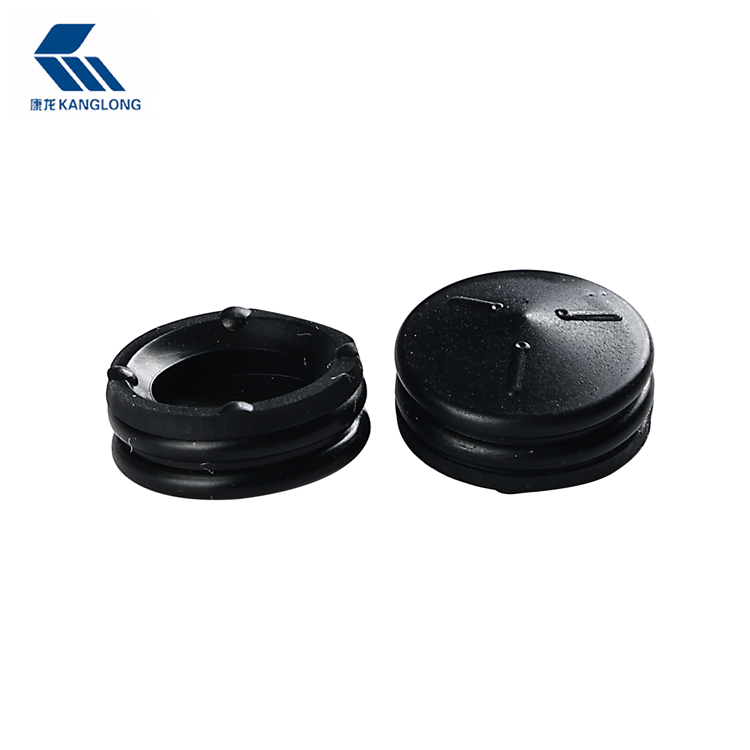Medical rubber stoppers play a critical role in ensuring the safety, efficacy, and longevity of pharmaceutical products. Used to seal vials, bottles, and other containers, these stoppers help protect medications from contamination, prevent exposure to environmental factors such as moisture and air, and maintain the integrity of the drug. As a result, rubber stoppers are indispensable in the pharmaceutical industry, ensuring that drugs are securely sealed and stored until they are ready for use. However, the manufacturing of rubber stoppers is not a one-size-fits-all process. Various types of rubber stoppers are produced to meet different medical and pharmaceutical requirements. These variations are primarily based on material composition, manufacturing processes, and intended use.

Medical rubber stoppers are commonly made from various elastomers, each selected for its unique properties. The commonly used materials include natural rubber, synthetic rubber, and silicone rubber. The choice of material depends on the specific needs of the pharmaceutical product being sealed, such as compatibility with the drug, mechanical properties, and the risk of contamination. Let's look at these materials in more detail:
Natural rubber is derived from the latex of rubber trees (Hevea brasiliensis) and is one of the common materials for medical rubber stoppers. It offers flexibility, resilience, and sealing performance, making it ideal for certain applications in the pharmaceutical industry. However, natural rubber can cause allergic reactions in sensitive individuals, and its performance can degrade when exposed to certain medications or harsh environmental conditions. For this reason, natural rubber stoppers are less commonly used for highly sensitive drugs.
Synthetic rubbers, such as styrene-butadiene rubber (SBR), butyl rubber, and nitrile rubber, are used as alternatives to natural rubber. These materials offer enhanced resistance to chemicals, temperature variations, and wear and tear. They are particularly useful in sealing vials containing injectable medications, as they are more stable and less likely to cause reactions. Synthetic rubber is generally preferred in the pharmaceutical industry because of its more controlled and consistent properties.
Silicone rubber is another popular material for medical rubber stoppers. Known for its thermal stability, biocompatibility, and resistance to chemicals, silicone is often chosen for drugs that require long-term storage or high-temperature stability. It is particularly useful in sealing products that are sensitive to moisture, air, or light. Moreover, silicone stoppers have low extractables, making them a safe option for sensitive biologic drugs and vaccines.
Fluoroelastomers, such as Viton, are specialized synthetic rubbers that offer high resistance to chemical corrosion and high temperatures. These materials are typically used for high-performance pharmaceutical applications, such as sealing drugs that may interact with other common rubber materials or are stored in conditions.
Apart from the material, the design of medical rubber stoppers also plays a significant role in their functionality. Stoppers come in various shapes, sizes, and configurations to accommodate different types of containers and sealing needs. Based on the design, medical rubber stoppers can be classified into the following categories:
Straight rubber stoppers are the common design used in sealing vials and ampoules. These stoppers are characterized by a simple, cylindrical shape with a flat or slightly rounded top. They are primarily used in pharmaceutical applications where a basic seal is sufficient to prevent contamination. The straight design ensures a snug fit in the vial opening and provides an airtight seal.
Conical rubber stoppers have a tapered design, with the diameter of the stopper narrowing toward the top. These are often used in glass vials that require a more secure seal and improved resistance to internal pressure. The tapering design helps distribute force evenly across the rubber stopper and creates a stronger seal, making these stoppers suitable for storing injectables and other high-pressure formulations.


 English
English Español
Español


.jpg?imageView2/2/w/500/h/500/format/jpg/q/100)






